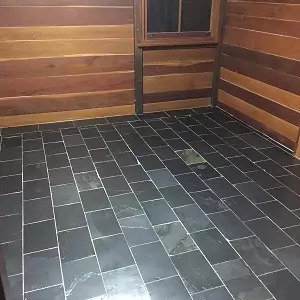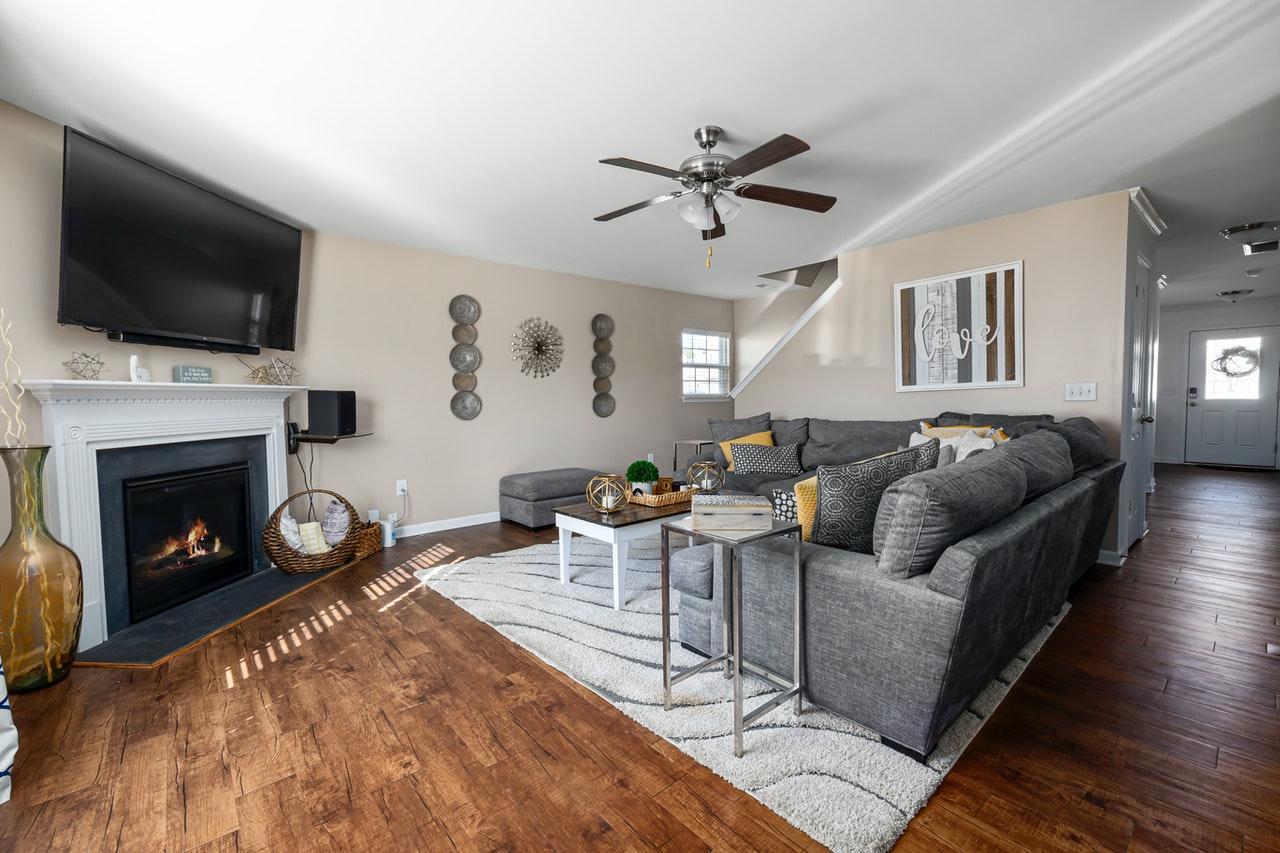Even if you’ve already limited your flooring options to natural stone, you still have a wide range of possibilities.
Slate is a distinctive option with lovely hues that go well with any design, even though Granite and Travertine are excellent options. Slate floors have an inherent anti-slip texture, making them an excellent choice for damp spaces. It is also one of the stone varieties that is most forgiving when it comes to spills and accidents.
Understanding Slate Floors – What is Slate?
Google defines Slate as “a fine-grained metamorphic rock”. They can be grey, green or bluish in colour. However, there are some selection of stone that can also look multi-coloured.
You can use these Slate for flooring in both indoor and outdoor areas by splitting them into uniform tiles. Slate floor tiles are put in a manner akin to other tiles: each tile is placed into a bed of mortar that sits on the subfloor, and grout is used between each tile.
These natural stone flooring are an excellent option for high traffic areas or wet areas, like kitchens, bathrooms or entryways, due to their composite material, making them extremely long-lasting, scratch-free and robust.
In addition to providing a lovely, yet neutral, colour palette to pick from, the many tones in the rock also serve to conceal crumbs, grime and other objects in between regular cleanings.
Pros & Cons of Slate Flooring
-
Pros of Slate Tile
Slate tile captures the breathtaking beauty of natural stone while maintaining its practical durability. Any space where it is installed can benefit from its enhanced aesthetic appeal. You’ll have a lot of options when it comes to hue and design if you choose to use Slate floor tiles for your courtyard or indoor flooring.
Thanks to Slate, you can choose designs that best suit your preferences and sense of style. Grayscale combinations, rusty browns, tans, olive greens and even cyan and purple flecks can be among the colours. Slate pavers and tiles come in a variety of patterns to enhance the appearance of your house, ranging from smooth finishes to naturally cleft face and back tiles.
Slate flooring resists stains and is incredibly durable. They require less upkeep to look nice and endure longer in practically any situation than hardwood, marble, or laminate floors. Slate tile is generally a great choice for flooring in places with high usage. It can withstand chips, cracks, scratches, and fractures, but stain resistance requires constant sealing. Because they only require routine sweeping with a brush and floor mopping with a light soap, slate floor tiles are incredibly simple to clean and maintain.
-
Cons of Slate Tile
Slate tile flooring can be fairly expensive, particularly if you choose high-quality materials that are probably going to survive for many years. However, Slate is regarded as an upscale flooring material that raises the value of your house, particularly in the kitchen, entryway and bathrooms.
Slate tiles are hard to cut without special tools, and they need to be laid on a solid platform with mortar to stop the flexing that can lead to tile cracking. Hence, professional installation is necessary, which can increase the cost. Because every Slate floor tile is different, it may be challenging to make future repairs if you’d like uniformity.
The Various Finishes Available for Slate Floor Tile
Although Slate floor tiles come in a variety of finishes, we’ll focus on the four most common ones here: polished, honed, tumbled and clefted. Let’s know what are they:
-
Polished Slate Tile: Sanded to a smooth, glossy surface, the tops of polished Slate floor tiles are refined. This does increase the surface’s slickness. Therefore, it might not be the best choice in damp places like restrooms.
-
Honed Slate Tile: These are tiles that have been polished yet left unpolished. Confused? Honed Slate floor tiles have a better texture and grip than polished tiles. When texture is needed in a modern floor design, this is a lovely option.
-
Tumbled Slate Tiles: These flooring tiles that have been tumbled have a more textured surface and softer edges and surfaces overall.
-
Clefted Slate Tile: The surface of natural Slate, also referred to as clefted slate tiles, is uneven and rough. Its irregular surface prevents it from slipping. Natural slate flooring is typically found in traditional or rustic environments.
Where to Get Your Slate Floor Tiles in Australia?
When it comes to Slate, the only name popular all over Australia is Stone Depot. There are the leading natural stone wholesalers who have their own quarries in India and export premium–grade Slate tiles to Australia at best-in-industry rates. They only offer honed and tumbled Slate tiles since they are the ones homeowners and landscapers mostly choose. There are various colour options that can suit your design requirements. You can ask for free samples to know more!
Final Thought
Slate floor tiles are regarded as an opulent material that, when fitted correctly, provides durable flooring that is reasonably priced. It makes sense for any homeowner seeking the best balance between longevity and aesthetic appeal.
We hope that this article on the benefits and drawbacks of slate tile flooring will give you a better understanding of what to anticipate from this gorgeous material.



